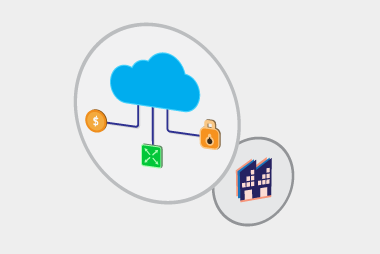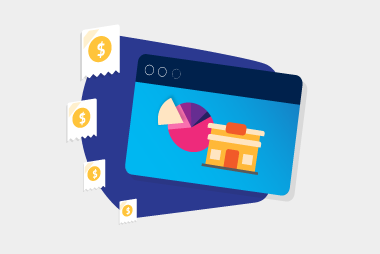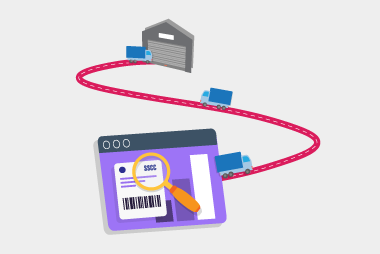On-premise EDI software
On- premise EDI software is owned by the business using it and everything from implementation to running the solution is usually done internally. The software is physically on-site and is operated from an in-house server with a connection to an ERP system. On-premise EDI solutions require the company to have an EDI software license, an in-house server, a network and IT staff to support the software.Cloud- based SaaS EDI software
With cloud-based SaaS EDI, the software is hosted in the cloud (i.e not on-site) and managed by a third-party service provider. Cloud EDI is web- based and is convenient as companies don’t need to invest in any infrastructure, additional resources or licenses. The cloud EDI service provider maintains the software, networks, servers, security and importantly the maintenance for you.On-premise vs cloud-based SaaS EDI
On-premise EDI software is a more traditional way of exchanging electronic documents through software that is purchased up-front and you own a license to it. It’s your responsibility to complete all software upgrade and backups. Whereas cloud-based, outsourced EDI is more modern and is slowly overtaking on-premise EDI. It’s usually based on a subscription model where businesses pay their service providers for use and maintenance of their solution.The key differences in on-premise and cloud EDI are:
Cost:
On-premise EDI: An on-premise software requires a lot of effort and can come with large up-front and on-going costs. The initial investment of buying and implementing the software, servers and network and the on-going maintenance and operating cost makes on-premise EDI can be expensive. It may also require extra resources to manage the service within the business. Cloud- based EDI: On the other hand, a cloud-based EDI service is relatively more cost effective and customers have the added bonus of only paying for what they use. Customers don’t have to worry about the maintenance and operating cost as the cloud service provider takes care of all of that, and it’s included in the subscription cost.Security:
On-premise EDI: Security is the primary concern of many organisations when it comes to procurement and financial transactions. Even though it is believed by many that on-premise EDI solution is more secure as it is in -house and the potential of the information being leaked is less, there are numerous measures that have to be taken to keep your data secure. Your team need to stay on top of security patches and make sure the software is constantly up-to-date to cater for any vulnerabilities. Cloud- based EDI: With cloud-based EDI software, the service provider should have multiple security protocols to keep your data safe. For example, MessageXchange is ISO27001 certified. We maintain the service to this standard and we're audited for this. We also have a team dedicated to ensuring our software it always up-to-date and not exposed to vulnerabilities.Scalability:
On-premise EDI: When your business grows and you need to trade more electronic documents, on-premise EDI can require you to purchase additional hardware and make more investments to cater for the growth. It can be difficult to scale up your business seamlessly if you’re using on-premise EDI software. Cloud- based EDI: With cloud-based EDI software, it’s pretty easy to scale up your business if your EDI provider has the right infrastructure. Your service provider takes care of the scalability and you can spend more time on the more important tasks for your business and continue to grow. Here at MessageXchange, we’re constantly monitoring the message volumes going through our service to ensure we have ample room to cater for our customers requirements. If you want to learn more about cloud-based SaaS EDI solutions and understand how we can help your business, request a call back from our EDI experts below.Request a call
Chat with one of our experts
Just fill out your details below and we'll be in touch within one business day.



